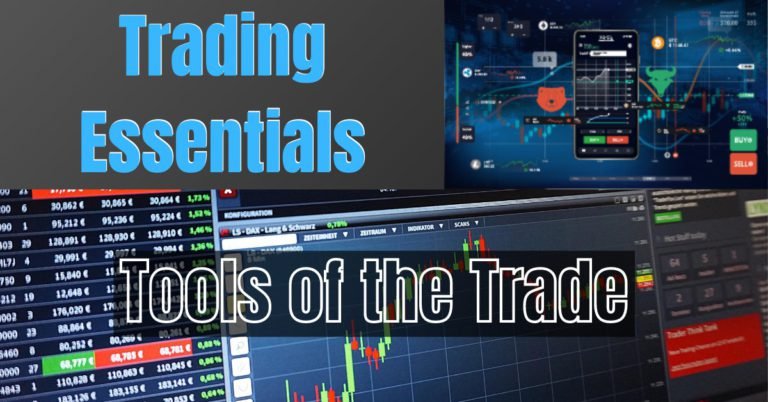
There are thousands of stocks on the market, not to mention multiple exchanges, sectors and industries. Learning how to find the best trades can be frustrating; and you may be tempted to outsource your homework. Don’t fall into the trap of purchasing pre-made watchlists and spending valuable trading capital on faulty predictions. Picking stocks doesn’t have to be mind-numbing; it can actually be quite fun and rewarding once you get the hang of it.
A winning watchlist isn’t created by choosing a random set of stocks from a laundry list of analyst articles. Be your own detective. Research trends, analyze charts and sleuth to find the most profitable setups. Over time, you’ll improve your ability to spot stocks that work best for your trading strategy and more quickly identify opportunities to make consistent gains.
What is a watchlist?
A watchlist is a filtered set of stocks you monitor in anticipation of making a trade. While not all stocks on your watchlist will be winners, the idea is to apply a consistent set of criteria to more predictably find the most promising bets on the market.
Types of watchlists
Build watchlists across multiple timeframes, including daily, weekly or monthly, depending on how soon and how often you anticipate taking trades. You may have multiple lists — one for potential short sells and another for bullish prospects. Track your favorite stocks in one list; and flag problematic stocks in another.
Watchlist size
Your goal is to maximize potential profits; so be choosy about where you invest your time, energy and capital. Narrow your focus by setting a maximum size for your watchlists. Consider watching three to four symbols for immediate trading, 15-25 for mid-term trades, and up to 100
How often to build a watchlist
How often you go about building your watchlists will depend on your personal preference and style of trading. For example, momentum traders build new watchlists every day to stay current with the most volatile price action moves. Mid-term traders keep quarterly watchlists that coincide with earnings reports. Long-term investors may refresh their lists on earnings, news and as new IPOs emerge. Regardless of frequency, your watchlists should continuously evolve with trends in the stock market.
How to get started
All you need to get started with building a watchlist is an open document and the internet. Charting and scanning platforms combine a number of technical indicators to help you navigate the noise and find trending stocks. Finviz is a free and intuitive scanning platform used by traders of every experience level.
Technical and fundamental analysis
By applying technical and fundamental analysis, you can increase your probability of getting into trades that grow your account.
Technical indicators are pattern-based analytics most often used by momentum traders to predict future price moves based on historical performance. Fundamental analysis is used among position traders to assess the overall health of a stock in relation to the market.
Price, volume and float indicators are commonly used by traders to scout their next moves. Earnings reports, financial statements and market analysis offer additional insights. Depending on your trading style, the way you prioritize these criteria when compiling your watchlists will vary.
Let’s start building
 Now that you’re familiar with technical and fundamental analysis, let’s explore some of these indicators and how to use them to build your winning watchlist.
Now that you’re familiar with technical and fundamental analysis, let’s explore some of these indicators and how to use them to build your winning watchlist.
Price and price action tells you the spread of a stock’s price, including opening and closing prices, highs and lows, and everything in between. Understanding a stock’s price and historical moves can help you set targets and calculate your risk-to-reward ratios.
Apply to your watchlist
Filter stock prices based on your account size and how much you’re able to risk per trade. It can be helpful to choose a price range you’re comfortable with trading, for example, under $10 or over $100. Then, find trending stocks by filtering for unusual price changes, looking for 4% or more price movement off averages.
Volume can tell you a lot about a stock’s popularity by measuring the number of shares traded over a period of time. Popular stocks with higher than average volume have the potential to
make larger gains over time. Sharp increases in volume can alert you to new trends to the upside or downside.
Apply to your watchlist
Look for higher than average volume when building your watchlist (think 4% or more). Also consider setting a minimum volume to ensure you’re watching the most popular stocks. Your target volume will vary depending on your trading style; but we generally scan for stocks with 500,000 average volume or more. Do your own research to find what works for you.
Float provides insight into a stock’s volatility by revealing how many shares of a particular stock are being actively traded on the market in comparison to the total number of available shares.
Simply put, float measures supply and demand. The higher the demand in relation to supply, the more volatile a stock’s price action will be, and the more quickly it will fluctuate between highs and lows.
Apply to your watchlist
We look for low float stocks with 200 million outstanding shares or less. What you define as a “low float” may vary depending on your trading strategy. If you’re shorting a stock, you may also consider a short float which indicates how many shares of total outstanding shares are shorted at any given time.
Catalysts include press releases, earning reports, mergers and acquisitions, IPOs and other news that can change or catapult the trajectory of a stock price. Catalysts will vary based on the sector and industry you’re trading. For example, biotech stocks frequently move based on FDA drug approvals, trial results and go-to-market activities.
Apply to your watchlist
When building your watchlists, filter for stocks with recent news and upcoming earnings. Keep in mind, the way a stock responds to news is entirely subject to market interpretation. “Positive” news doesn’t always mean a stock’s price will increase; and vice versa. Never rely on one indicator to choose a stock. Build the strongest case possible by using all your available research.
Moving forward
A well-researched watchlist can make a difference in your trading performance. Once you’ve done your scans and gathered sufficient data, get organized by flagging your favorite picks at the top of your watchlist. Get rid of any stocks that are not serving you. Keep updating your watchlists daily, weekly, monthly or as needed; and refine your criteria as you gain more experience. Now, get out there and test your watchlist on the market!




